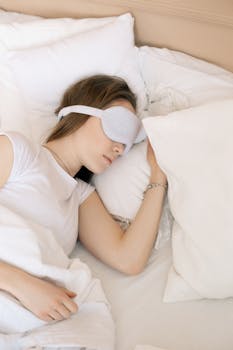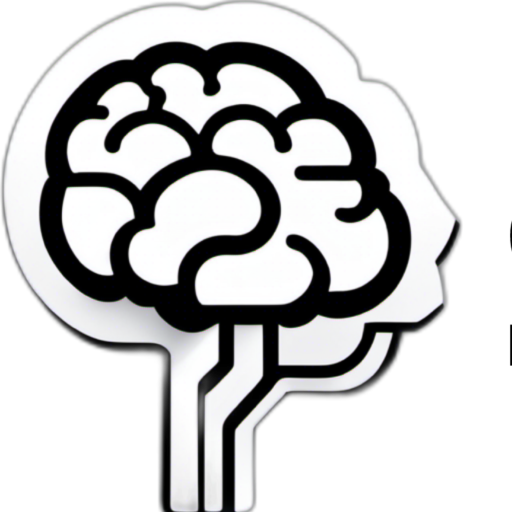Understanding Back Pain
Back pain is a prevalent condition that can greatly affect one’s quality of life that’s why I share 12 fast and effective back pain relief home remedies.
I have suffered for over 30 year with back pain but have learned how to relieve my pain naturally.
It manifests in various forms and can stem from multiple factors.
Common causes of back pain include muscle strain which may occur due to overexertion or lifting heavy objects improperly.
Poor posture, whether from extended periods of sitting or standing, can also contribute
significantly to discomfort and pain in the back.
CBD Pain Relief Cream
Almost 25% of adults suffer from joint pain. That number skyrockets to over 70% for people over the age of 60. That’s why we created the most advanced Pain Relief Cream on the market. Scientifically formulated to maximize synergy between all of the ingredients, LiveGood CBD Pain Relief Cream gives you results that can be felt in minutes and last for hours!
Member Price: $17.95
Retail Price: $24.95

Injuries resulting from accidents or falls often lead to acute back pain,
whereas underlying health conditions such as arthritis can cause chronic discomfort.
Back pain is generally classified into two main types: acute and chronic.
Acute back pain typically occurs suddenly and can last for a few days to a few weeks.
It is usually the result of an identifiable cause, such as a muscle strain or injury.
Chronic back pain, on the other hand, persists for three months or longer and may be
linked to underlying health issues, lifestyle factors, or previous injuries.
Understanding the type of back pain, one is experiencing is crucial, as it can determine the appropriate approach for relief.
Seeking relief through home remedies can be an effective strategy for managing back pain without the immediate need for medical intervention.
Many individuals find that simple practices such as stretching, applying heat, or using over-the-counter medications can significantly alleviate symptoms.
The accessibility of these remedies makes them particularly appealing, allowing individuals to address their discomfort conveniently within their own homes.
Moreover, understanding the various causes and types of back pain is essential for making informed decisions about suitable remedies and recognizing when professional help may be required.
The Importance of Home Remedies
Home remedies for back pain are increasingly recognized for their convenience, cost-effectiveness, and safety.
Many individuals facing chronic or acute back pain often seek immediate relief but may be constrained by time, finances, or accessibility issues.
Home remedies, which can be easily integrated into daily routines, offer practical solutions that can be implemented without the need for professional medical intervention.
This aspect is particularly appealing for those who are looking for quick fixes without prolonged commitments.
One of the primary advantages of using home remedies is their affordability.
Treatments such as hot or cold compresses, stretches, and the use of natural ingredients which are readily available at home can provide significant relief without incurring the high costs associated with prescription medications or therapy sessions.
Moreover, many home remedies utilize common household items, ensuring that individuals do not have to venture out or make special purchases to alleviate their discomfort.
In addition, the safety profile of home remedies is often favorable.
Unlike some pharmaceutical options, many natural remedies come with a lower risk of side effects.
For those who may have sensitivities to certain medications or have underlying health conditions, turning to home-based solutions can be a less risky avenue to explore.
Furthermore, as these remedies are easy to apply, individuals can monitor their effects closely and adjust accordingly, taking an active role in their health management.
Integrating home remedies into one’s daily routine is another considerable benefit.
Simple practices, such as taking breaks to stretch, engaging in gentle exercises, or
applying natural topical treatments, can seamlessly fit into daily activities.
This fosters a sense of empowerment and involves individuals in their care, enabling them to better manage their pain while promoting overall wellness.
By utilizing these remedies consistently, patients not only aim for relief but also work towards prevention and improved musculoskeletal health.

Full Site Editing
CBD Oil
At LiveGood, we pride ourselves on providing only the highest quality, purest products on the planet. And our CBD Oil represents that to the utmost level. Derived from only the top 1% of hemp farms in the country, LiveGood CBD Oils ensure you will experience maximum benefit with each and every drop.
Member Price: $14.95
Retail Price: $19.95
Hot and Cold Therapy
Hot and cold therapy is a widely recognized approach to alleviating back pain, and it can be easily implemented at home.
Understanding when to use heat versus cold is crucial for delivering effective relief.
Cold therapy is most beneficial during the first 48 hours following an injury, such as a sprain or strain.
During this period, applying an ice pack to the affected area can help reduce inflammation and numb the pain.
It is advisable to use a cold pack wrapped in a cloth to prevent frostbite, applying it for 15 to 20 minutes at a time, with at least an hour in between sessions.
On the other hand, heat therapy is ideal for chronic pain or tension in muscles, particularly when muscle stiffness is present.
Applying a heating pad or a warm towel helps to increase blood flow to the area, promoting healing and relaxation of tight muscles.
When using heat, the application duration should also be 15 to 20 minutes, with breaks in between.
However, individuals should ensure that the heat is warm rather than hot to avoid burns.
Additionally, moist heat sources, such as a hot shower or a warm bath, can be particularly effective for relieving muscle spasms.
The scientific rationale behind temperature therapies lies in their ability to affect blood circulation and tissue responsiveness.
Cold therapy acts to constrict blood vessels and limit blood flow, reducing swelling and soreness.
In contrast, heat therapy dilates blood vessels, easing muscle tension and allowing for a greater exchange of nutrients and oxygen in the muscle tissues.
By systematically alternating between hot and cold applications, individuals may experience enhanced back pain relief.
Overall, integrating these methods into a pain management routine can significantly contribute to improving one’s quality of life.
Stretching and Strengthening Exercises

Back pain relief can often be achieved through a regular routine of targeted stretching and strengthening exercises.
These exercises are designed to alleviate tension, improve flexibility, and build strength in the muscles that support the spine.
It is crucial to perform these exercises with proper technique to prevent any further injury.
One effective stretch is the cat-cow stretch, which promotes spinal flexibility.
Begin on all fours with your hands aligned under your shoulders and knees under your hips.
Inhale as you arch your back, dropping your belly towards the ground while lifting your head and tailbone towards the ceiling (cow pose).
Exhale, rounding your spine upwards, tucking your chin towards your chest (cat pose). Repeat this sequence for 5-10 rounds, focusing on the smooth movement between positions.
Another beneficial exercise is the child’s pose.
From an all-fours position, sit back on your heels and extend your arms forward, lowering your forehead to the ground.
This position helps to lengthen the spine and relax the back muscles. Hold the pose for 30 seconds to a minute, breathing deeply to enhance relaxation.
To strengthen the core, try planks.

Start by lying face down, then lift your body off the ground, balancing on your forearms and toes.
Keep your body in a straight line from head to heels, engaging your abdominal muscles.
Hold for 20-30 seconds, gradually increasing the duration as your strength improves.
Consistency is paramount when performing these exercises.
Aim for at least three sessions per week to see significant improvements.
Additionally, always listen to your body and modify exercises as necessary to accommodate your fitness level and any existing discomfort.
The Role of Posture and Ergonomics
Maintaining proper posture and incorporating ergonomic practices into daily routines are essential to prevent and alleviate back pain.
When we speak of posture, it refers to the alignment of the body during sitting, standing, and sleeping.
Poor posture can lead to significant strain on the back muscles and spinal structures, often resulting in discomfort or chronic pain.
When sitting, it is crucial to ensure that the back is straight, and shoulders are relaxed.
The feet should be flat on the floor, with the knees bent at a right angle, promoting a neutral spine position.
Utilizing a chair with proper lumbar support can greatly enhance comfort and help maintain the natural curvature of the spine.
In addition, regularly adjusting your position while working at a desk can help mitigate prolonged pressure on specific areas of the back.
For standing positions, weight should be evenly distributed on both feet, which helps maintain balance and reduces strain on the lower back.
It is advisable to avoid locking the knees and to take breaks to stretch and shift positions.
When it comes to sleeping, selecting the right mattress and pillow is vital.

A mattress that offers adequate support tailored to individual sleep styles—whether on the back, side, or stomach—can significantly contribute to back health.
Furthermore, investing in ergonomic furniture and accessories can enhance overall comfort at home and work.
Adjustable desks allow individuals to alternate between sitting and standing, while ergonomic chairs and keyboard trays can promote a natural posture and reduce strain.
Other accessories, such as footrests and monitor stands, help create a workspace that supports proper alignment.
By prioritizing effective posture and ergonomic adjustments, individuals can significantly reduce their risk of developing back pain while enhancing their overall well-being.
Natural Remedies and Pain Relievers
For individuals experiencing back pain, exploring natural remedies and over-the-counter pain relievers can provide effective relief.
Many people prefer these options due to their accessibility and minimal side effects compared to prescription medications.
Various herbal treatments, topical ointments, and essential oils are promising alternatives worth considering.
One widely recognized natural remedy is the application of herbal treatments such as turmeric and ginger.
Both possess anti-inflammatory properties that can alleviate pain when consumed.
Turmeric, specifically, can be added to foods or taken in capsule form.
Ginger tea, made by steeping fresh ginger in hot water, is another excellent option, as it serves not only as a remedy but also promotes hydration.

Topical ointments that contain menthol or capsaicin have also shown effectiveness in pain relief.
These ointments create a warming or cooling sensation that distracts nerves from pain signals.
Applying these products to the affected area two to three times daily can enhance comfort levels.
It is advisable to patch-test these ointments on a small skin area to rule out any allergic reactions before comprehensive use.
Essential oils, such as lavender, eucalyptus, and peppermint, are valuable tools in combating back pain.
They can be diluted with a carrier oil and massaged gently into the painful area to promote relaxation and pain reduction.
Alternatively, a diffuser can disperse the aroma throughout the room, creating a soothing environment that helps alleviate tension in the back.
It is important for individuals to approach these remedies with caution and awareness of their own health conditions.
Consulting with a healthcare professional prior to trying new treatments is recommended, especially for those who are pregnant, nursing, or taking other medications.
This approach will ensure a safe and effective experience on the journey toward back pain relief.
When to Consult a Professional
Back pain is a prevalent ailment that can often be managed with home remedies and self-care strategies.
However, there are critical instances when it becomes necessary to consult a medical professional for further evaluation and treatment.
Recognizing the warning signs that indicate a more severe condition is vital for your overall health and well-being.
First and foremost, if your back pain is accompanied by symptoms such as persistent fever, unexplained weight loss, or weakness and numbness in the legs or arms, these could be indicators of a more serious issue.
Conditions such as infections, fractures, or spinal disorders may necessitate medical intervention.
Additionally, if the pain intensifies over time or does not improve with home treatments, it may be time to seek the advice of a healthcare provider.
Another key factor is the impact of back pain on your daily activities.
If you find it increasingly challenging to perform routine tasks, such as walking, standing, or even sleeping, a professional evaluation is recommended.
Similarly, if your back pain is preventing you from engaging in your regular exercise or leisure activities, it would be prudent to consult with a specialist.
Consulting a professional is particularly important if the back pain radiates down your legs or is associated with loss of bowel or bladder control, as these symptoms may signify a more critical underlying condition that requires immediate medical attention.
A healthcare provider can conduct a comprehensive assessment, including necessary imaging tests or referrals to specialists, to pinpoint the root cause of the pain.
In conclusion, while home remedies can provide temporary relief, being vigilant about the symptoms and recognizing when to consult a professional can help prevent complications and lead to effective management of back pain.
Thank you for taking the time to read this post here at CrazyHealthIdeas.com!
Your interest means a lot to us, and we hope you found the content engaging and informative.
If you enjoyed this article, we encourage you to explore our other posts as well. Each one is crafted with care to offer valuable insights and perspectives that we believe you will find useful.
Your feedback and engagement are what motivate us to keep creating, so don’t hesitate to share your thoughts.
We appreciate your support and look forward to bringing you more great content in the future! Happy reading!
The Real Paleo Diet
https://youtube.com/watch?v=AtEubaJ30n0The paleo diet is becoming more popular, but research suggests its claims aren’t all that…
Why do We Brush Our Teeth? | Health for Kids | SciShow Kids
https://youtube.com/watch?v=aOebfGGcjVwWe all need to do it! Learn why we all should brush our teeth, and…
Protein shake vs chicken ? #health #food #fatburningsecrets #tips #fasterwaytofatloss
Cut your calories ? #health #fatburningsecrets #tips #fasterwaytofatloss #healthy
Stomach Exercises to Lose Belly Fat | EMMA Fitness
https://youtube.com/watch?v=rXWywMxynik► Stomach Exercises to Lose Belly Fat | EMMA Fitness #EMMAFitness #aerobic #emma ▬▬▬▬▬▬▬▬▬▬ ⏳…









Leave a Reply